Running red lights is a serious problem here in Hawaii. First, it results in deaths, injuries and other crashes at intersections with signals. The state says that between 2015 and 2020, 1,879 crashes resulted from red-light and other traffic signal violations.
Hawaii is one of 26 states without automated traffic enforcement on their public roads. Federal data suggests, however, that automated traffic enforcement can help reduce costs, lessen the danger to officers, and increase traffic law awareness among drivers.
Following are the locations of Honolulu red-light cameras that are now active and issuing citations.
- Vineyard Boulevard and Pālama Street Live for citations. 602 citations.
- Vineyard Boulevard and Liliha Street Live for citations. 243 citations (north-west approach) 581 citations (south-east approach).
- Vineyard Boulevard and Nu‘uanu Avenue. 131 citations.
- Pali Highway and Vineyard Boulevard7 citations (north-west approach), 70 citations (south-east approach).
- Pali Highway and School Street. 444 citations.
- Likelike Highway and School Street. 0 citations (north-east approach) 4 citations (south-west approach).
- King Street and Ward Avenue. No warnings or citations to date.
- Kapiʻolani Boulevard and Kamakeʻe Street. 85 warnings.
- Beretania Street and Pi‘ikoi Street. 112 warnings (west-bound approach), 220 warnings (north-bound approach).
- McCully Street and Algaroba.
How these came to be.
In 2019 the Hawaii legislature created a two-year pilot to evaluate the enforcement of red-light running.
Last year, The Hawaii DOT and the City and County of Honolulu Department of Transportation Services selected intersections for placement of the pilot cameras based on crash and traffic information. That was followed by engineering studies.
How Honolulu red-light cameras work.
When a red light is run, images are captured by the red-light system, recorded, and encrypted. The files contain multiple still images, videos, and other data pertaining to the potential red-light violation.
That information is transferred to a processing center for screening to confirm the violation and match data to license plate data. Only those deemed to be potential violations are sent on for additional screening.
The Honolulu Police Department reviews and finalizes a decision to approve or reject the violation. Violations are printed and mailed within 10 days of the violation. The data can subsequently be reviewed by the recipient online. Payment is then also handled online.
How much is the fine?
First-time fines are up to $200. Subsequent violations cost more.
Where does the money collected go?
The state says that “All fines collected under HRS Chapter 291J shall be deposited into the photo red light imaging detector systems program special fund. The fund can only be used for the establishment, implementation, operation, oversight, repair, and maintenance of the red-light safety camera system. The vendor is not paid based on the number of citations given by the system (see HRS 291J-4).”
Get Breaking Hawaii Travel News
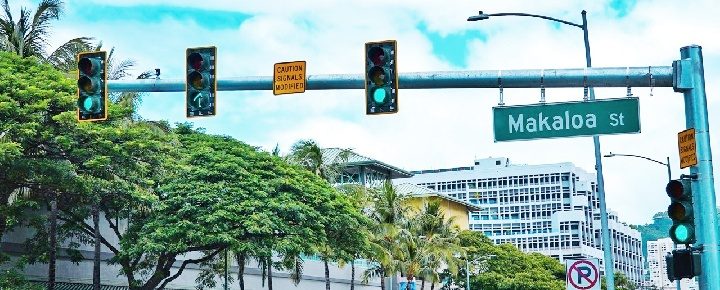
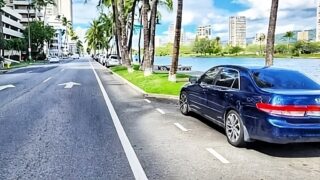

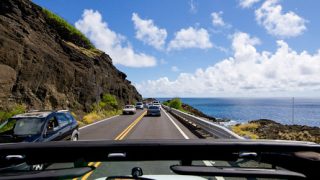
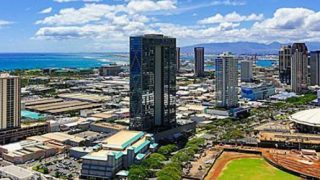
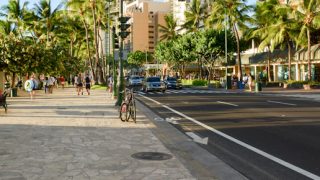
Wheather cameras are to generate money, it’s only from the reckless drivers that run the red light! Slow down, watch speed limit, try not to block intersections!
IF this saves 1 life, 1 serious injury, Then the cameras are doing the job they’re meant to do!!
How do you explain a loss to someone? Using this logic? to only make money?
Beatofhawaii, I was once a resident of Hawaii. I moved to California in 1996 live there since, in California we had the same system there it didn’t quite work it would be thrown out of court because lack of evidence, than the cost to run these cameras was astonishing costing the state too much moneys, so they discontinue the camera system. So my suggestion is up your red light penalty fines, California is $351 first offense, second offense is $891, the third license suspended of license & $1021 fine
It’s a good system, too many drivers don’t follow the ethics & state law.
This process lacks due process and is unconstitutional and the cameras need to be immediately removed. This needs to be taken to the Supreme Court.
…Or people can stop breaking the law, trying to find ways to get away with it, and take some responsibility for their dangerous actions.
I would say that the fines that are usually given when you break a traffic law and give me a citation are usually pretty big and therefore most are taking responsibility for their actions when they’re caught there’s no need for cameras to be put everywhere in a race to be violated we don’t need that to happen in order to be safe it’s called policing we’ve been doing it for a very long time and it should be the same still we should not allow cameras to take over the jobs of policeman, we should not allow cameras to take over everything and watch every single thing we do every single minute !, we are free people and I’d like to stay that way! No, we don’t want to be policed every second of everyday by cameras!! think about it
thank you
Actually, Kai, I believe due process will be afforded to you should you want to contest the citation. You can go to court where the video and stills will be in evidence and given full due process.
The Supreme Court has already ruled. On traffic cameras, they’re going against the constitutional rights of the people of Hawaii knowingly, This is systematic and deliberate that they Steal your constitutional rights and force you to challenge it in court. We need to start asking for sanctions and make the legislators pay out of their pocket for unconstitutional laws
Kai, here’s some friendly advice: instead of hyperbolizing basic public safety concerns into a faux constitutional crisis, maybe concentrate on not running red lights and keeping your fellow citizens safe and healthy. Mahalo for your kokua, and drive safely!
Aloha Beat of Hawaii
I thought of you this morning when the rocket failure happened.
I’m in awe of the Huge failure.
We’re blessed.
Mahalo for all you do.
Always.
Hi Pam.
You’re so funny! Thanks for thinking of us.
Aloha.
I wish you would have thought to look into it before commenting as it was not a failure relative to their goals. It more than exceeded their goals.
Just because you’re a visitor does not exempt you from traffic rules. Traffic rules are same nationwide and not state to state! Know the rules or don’t drive
No they are not, traffic laws differ state to state lol…
Anything to be snarky to a visitor it seems🙄
Peace and love to all
Brooke
Traffic lights are the same nation wide! Also painted road lines.
Does this mean you can plead stupidity of the law? Then why even drive in paradise? So if you run the light or injure someone or worst kill a person. You can plead traffic laws are different? Stupidly is not a excuse
Please Clear intersection and update signs. Make it Visible to Visitors driving for the first time.
Do you mean speed limit signs? If so, totally reasonable. If you mean signs that they could get a ticket, definitely not.
1) I remember being 20 and getting a fine. I couldn’t afford to buy food for two weeks. (My car broke down and was then “illegally parked” – thus the big parking fine and towing bill.) I think fines should reflect the income level of those being fined. (Like the best Democracies do in their countries.)
2) The fine should also reflect the infraction. Stopping just past the line on a right turn or stopping just past the line at the stop light should not be worthy of tickets unless it is a repeat offender who has been warned many times. Even then, I’m not sure it should be ticketed. Yet I’ve read that that those are the most common tickets.
3) Studies to justify camera use are highly distorted to justify city income at our expense.
Tonyd, no one is forcing you to drive or run a red light. It’s totally up to you. As the City said, the revenue from this program is not going into City general coffers…it’s to fund a program that punishes those who are a danger to our communities.
Did you take your case to court? I’m pretty sure you would have been taken off the hook for your parking offense.
Btw, I’m curious to hear which countries bases their traffic fines on the offender’s income level?
MiTOB – My comment should have mentioned that the vast, vast majority of camera tickets are for stopping over the line on a right turn. The second most common type of ticket is for stopping over the line at the intersection. I’m 100% in favor of safer streets and using lots of cameras to do that. But right now cameras are primarily being used to generate revenue. I’ve actually taken the time to read many of the camera studies, and they intentionally don’t mention the increase in other types of accidents at those intersections (people stopping short at camera intersections.) They make huge sums for the companies installing cameras. The goal is getting our money for minor infractions, while usually doing surprisingly little to make us safer.
If you go to court and mention your fiscal problem and why, the judge may adjust the fine it make you eligible for time payments, or both.
Well, we’re getting off topic here, but when I went to the judge she said that since I didn’t have a car repair bill then I had to pay. I had gotten the car running myself and said so. I should add that this was decades ago, and I’m doing fine these days. But I still viscerally remember the anxiety of trying to figure out how I would manage to eat for those weeks. And I still remember the “I don’t really care” attitude of that judge. I was working and trying to survive, and she really didn’t care. Remembering this makes me feel anxious even now, decades later.
Thank you for implementing something. Drivers in Hawaii are pretty bad almost comparing to San Francisco. It’s so dangerous to walk now even on the side walk.
Did they ever collect on 800 mil past fines ? If not ….what’s the purpose?
I’ve that some places adjust the yellow light by reducing the time it is on. It’s reduced just enough to make running a red more prevalent.
Urban myth conspiracy theory. Yello light durations are a national standard.
There may be a national standard but that doesn’t mean local areas have to obey it.
Yeah they do. And some have gotten tagged out for violating it.
Urban myth.
Nope: ww2.motorists.org/blog/6-cities-that-were-caught-shortening-yellow-light-times-for-profit/
The federal Department of Transportation recommends (not requires) be between 3 and 6 seconds long. Many cities change this to the lower about of time.
Naperville (Chicago area) has yellow lights 3.5 seconds long.
The recommended yellow duration is 3.5 seconds for streets with speeds limits of 30 mph. Out of 22 intersections monitored, only 5 met or surpassed the 3.5 seconds recommendation.
Yellow lights are very fast in Europe. However, their interpretation of yellow is different. You have to stop on yellow, unless your car is already in the intersection.
And what of all the rental cars driven by tourists? How will that get sorted as the driver is not the registered owner? Dismissed or dropped?
Seriously you dont think they know whos renting the car? Do you ever think?
The car rental agency will forward the bill to the driver. They must pay or be sent to collections and have a mark on Hawaii’s DMV.
Or, as with road tolls, they might just charge your credit card that they have on file.
Yes! Traffic rules are there for a reason, drive responsibility, safe for everyone.
Seen some speeders at kapiolani and date, also ignoring the green right arrow at foodland into Kapahulu.
Would like to see an audit log of all activities in the photo review process. Have some sneaking feeling vehicles leading back to Shopo members get discarded.
First fine should start from 500$
Cameras should be on every crossroad.
Aloha. The last I heard in Texas the red light cameras were deactivated. After awhile it was said that there was no profit but with the tickets accumulated the cameras were paid for. Personally the cameras make me nervous. I feel like I’ll get up to the light and it changes and I don’t have time to stop. In my personal car I don’t like the idea of the fine. I have been retired for 2 years. I was driving a school bus for 21 years before that. On my bus as well as disliking the fine I didn’t want the violation on my record. When I visit Honolulu I don’t have to worry. I take the Bus everywhere. How long have the cameras been active in Honolulu? Mahalo.
I understand that you don’t like the idea of the fine. It’s very simple: don’t run a red light. The yellow light is there to tell you that the red light is coming soon. When you see yellow, you should stop. If you follow these basic rules, there is nothing to fear about these cameras. Best of luck.
As I said in my comment to me it’s not as simple as you try to make it. The yellow lights don’t last long enough. I don’t run the red lights on purpose. You come to an intersection and make a judgment call and sometimes for me it’s necessary to slam on the brakes to avoid running the red light. Maybe for me the camera watching me is like tests in school. Just the thought of it makes me tense.
I must respectfully disagree. If the yellow lights aren’t giving you enough time to prepare to stop, then you’re just driving too fast. Please drive at ir below the posted speed limit, refrain from texting, and stay alert if other traffic. Be safe, not sorry. Mahalo!
Studies have shown that reducing the yellow length by just 0.5 seconds increases the number of red light camera photos. Do a search on red light cameras yellow adjustment
Only drivers intentionally entering the intersection despite the yellow light would be affected by a 0.5 sec reduction in yellow light duration. Yellow means “prepare to stop now” not “accelerate and try to beat the red light.”
That’s basic Drivers Ed 101.
Who’s to say for sure it’s only a 0.5 sec reduction? I took drivers ed and I know what the yellow light means. What does the yellow light mean? Slow down. Whaaatttt does the yeeellloooww liiiight meeeean? You have your opinions on the cameras and I have mine. Let’s agree to disagree on this subject. Mahalo and aloha.
Sorry but no. Yellow light means prepare to stop because a red light is about to come on after which it is illegal to enter the intersection. Basic stuff. Mahalo.
Yes dear. Slow down and prepare to stop. The prepare to stop was supposed to be understood without the words. Duh.
I must respectfully disagree with you. I try to watch my speed especially when I was driving a school bus. I have heard the time limit on the yellow lights was shortened on purpose. Anyway as I said I don’t have to worry about it anymore. There are no cameras where I live and when I visit Honolulu I ride the Bus. I’ll let the bus driver do the worrying, planning and complying.
If the yellow doesn’t last long enough – complain. Cities have been taken to court over this, and in some cases they were forced to extend the length of their yellow lights because it was demonstrated they didn’t meet the standards.
This is great news. If we have to start fining everyone to learn to respect the law and the lives of others, then this is perfect. Should be a stiffer fine….Unless, like me, the light was yellow and I thought safe to go, but even if it turns red when you are going yellow, then a fine it is. It’s ok. We all should learn to sloooooooow down and respect. Mostly important comply. Hear that? C o m p l y!
Please let us know if this is also happening on the Big Island. A few years ago, they put up dozens of cameras at every lighted intersection … if it’s 2am and there is no one on the road, then why does one have to sit at a red light for 5 minutes, when it’s perfectly clear that there is no one else in sight?
Hyperbole doesn’t help anyone. No traffic light takes five minutes to cycle. More like 30 seconds. So as you’re sitting there at 3 AM waiting for the light to change, how about rolling down the window and listening to the beautiful sounds of the Hawaiian night?
Thank you for driving responsibly!
Because I’m trying to get to the hospital quickly, where I work, to take care of you or your family members needing emergency medical care at 3am.
I work at a busy hospital and I am on call and I know who needs to respond quickly and who doesn’t. Anyone needed that urgently is already going to be at the hospital / they don’t get to go home when they’re working. If you get called in, a one minute delay at a red light is of no consequence. Nice try but no cigar. And honestly, you’re being amazingly disingenuous as a supposed emergency healthcare provider to claim that red light cameras, which are designed to save lives and limbs, should be disallowed because they inconvenience you directly.
because it’s the law?!
Goodvforthem, although I would tighten the restrictions on where the money derived from fines is spent. Also, I’d like to see the minimum fine increased to $1,000, and a suspended license for six months. Hit people where it hurts!
If you are a visitor and are using a rental car are you free from paying the fine?
No. The states have gotten together and trade information about “bad people”.
In my experience having rented cars hundreds of times in many states & in Europe: the “fine print” which no one typically reads, yet every renter signs anyway, contains a provision that says that parking tickets & traffic tickets of any kind will be charged to you, via the credit card on file with the car rental company that you used to pick up your rental car with, in the first place. I had to learn this “the hard way” via a hidden (on the side of the road) “speed trap” camera.
I live in a state that has had traffic cameras for a long time. Most have been disconnected. They were deemed unenforceable and were causing more accidents than they prevented, People know there is a camera, they slam on the brakes and then get rear-ended. I suppose Hawaii could enforce for tourists by putting people on some kind of no fly list and deny entry in to the state but I think they are going to find that these cameras are a very expensive experiment that doesn’t produce the revenue they hoped. That was certainly the case where I live. And, don’t be fooled. It is all about the money and much less about safety.
I agree with you 100% People will Jam on their brakes and create an accident.
and running the red light does what?
Same here. I live in a state that had/has red light cameras. Most, if not all, were disconnected (there may still be some – not sure). Data came out that rear-end collisions were increasing from folks hitting the brakes at yellow lights in order to avoid a ticket. I think there was also something about constitutional rights and privacy, not to mention loads of questions about just exactly where does the money go. I got dinged years ago and it cost me at least $500.00 plus a day in traffic school to keep it off my record. I did accidentally run the light, but it was somewhere in the wee hours of the morning and there were no cars anywhere around. Guilty as charged, but still…
Here in Portland, Oregon we’ve had cameras for several years and they have paid off. Since Oregon state law prohibits DUI/speed roadblocks, the cameras were installed. In Portland proper our Police Bureau is severely short staffed and does not allow traffic enforcement currently. The governor has assigned Oregon State Police to the Portland area to deal with traffic stops.
Thanks for the info. Lived their twice and have a son and his family living in Hawaii Kai. Try to visit each summer. Aloha
Fantastic. I am a healthcare professional who works at a regional trauma center on Maui. Automobiles crashing into each other at intersections or hitting pedestrians are one of the major causes of death and major disability, not only in Hawaii, but also the United States. Drivers who ignore yellow lights only to accelerate through red lights should be fined, and heavily. Drivers who respect red light laws have nothing to worry about. Yes, the data shows that cameras work. And no, it’s not a “money grab.” It’s using a stick when a carrot doesn’t work.
There are way too many aggressive drivers whose risky habits cause too many serious accidents. The penalties should be stiffer!
This is a good start-I hope it’s used on Kauai too-most drivers do not stop for pedestrians
Good luck with that! As a UPS driver in cities that have used them, intersections are more dangerous. People slam the brakes for fear of a ticket. Not a fan Another govt sponsored cash machine
Actually the cameras reduce fatal collisions. A few more rear-enders, but the bad crashes )impacts from the side by vehicles entering the intersection) are reduced. Cameras save lives.
Issuing the tickets is one thing. Getting them paid is another. I hope it helps reduce people running the red lights.
Just curious, how are the tickets handled for non-residents who are renting vehicles? I expect the Rental Agency will connect who had the car and either forward the citation to the renter or pass it on to the Police Dept for them to mail it to the guilty party.
Anyway, once the violating tourist is located stateside, what enforcement mechanism is used to make sure they pay their fine? If they never return to Hawaii, does it simply die? Somebody in Des Moines probably won’t take the citation seriously if they already have had their “once in a lifetime” trip to Hawaii and don’t plan on returning.
Blue Skies!
I believe any traffic violation tickets are normally sent to the rental car company. They will pay the bill, charge the credit card plus an administration fee and generally let you know. As they have the violation showing the photo of you driving the car with the timestamp and the red light showing it’s pretty hard to dispute. You can get a copy of the violation.
Gee, it’s interesting TX and FL did a decade long study on their cameras and found them useless and sometimes caused more rear end collisions at intersections.
But it’s Hawaii.. why follow data from States with over 50 million people combined?
Hawaii isn’t Texas or Florida
Read the actual studies. Cameras can cause slightly more rear-enders, which are rarely serious or fatal. But they decrease side (“T-bone”) crashes, which are often serious or fatal. Overall, cameras save lives.
Additionally we need mobile camera vans that can be randomly positioned so that we can slow ourselves down. Especially here on Kauai. There is an intersection near me where 8 of 10 cars run the stop sign.
How do they handle citations for people driving rental cars? With a 10 day delay between the offense and the citation being mailed, it’s quite possible the driver has already returned to their home.
When you sign the rental car agreement you attest that you will pay any traffic fines incurred. It’s a legal document. The car rental company can and will report you to a collection agency. Your credit rating will suffer. Not sure how your insurance company is informed that you committed a moving violation, but they do. It’s called “Accountability.”
I recall something in the US Constitution about being able to face your accuser. Will the red light cameras be available for questioning?
I’m being serious. As a human, I expect if I am accused of a wrong doing then I can face my accuser.
In Salem, OR, which has had them, apparently successfully, for several years now, all of the photos/videos are reviewed by a Salem police officer, who is the person writing the ticket. That is your accuser.
Cameras are not accusers; the local traffic court is where you can confront the visual evidence of your infraction. And you’re most welcome to show up and have your day in court. Drive safely!